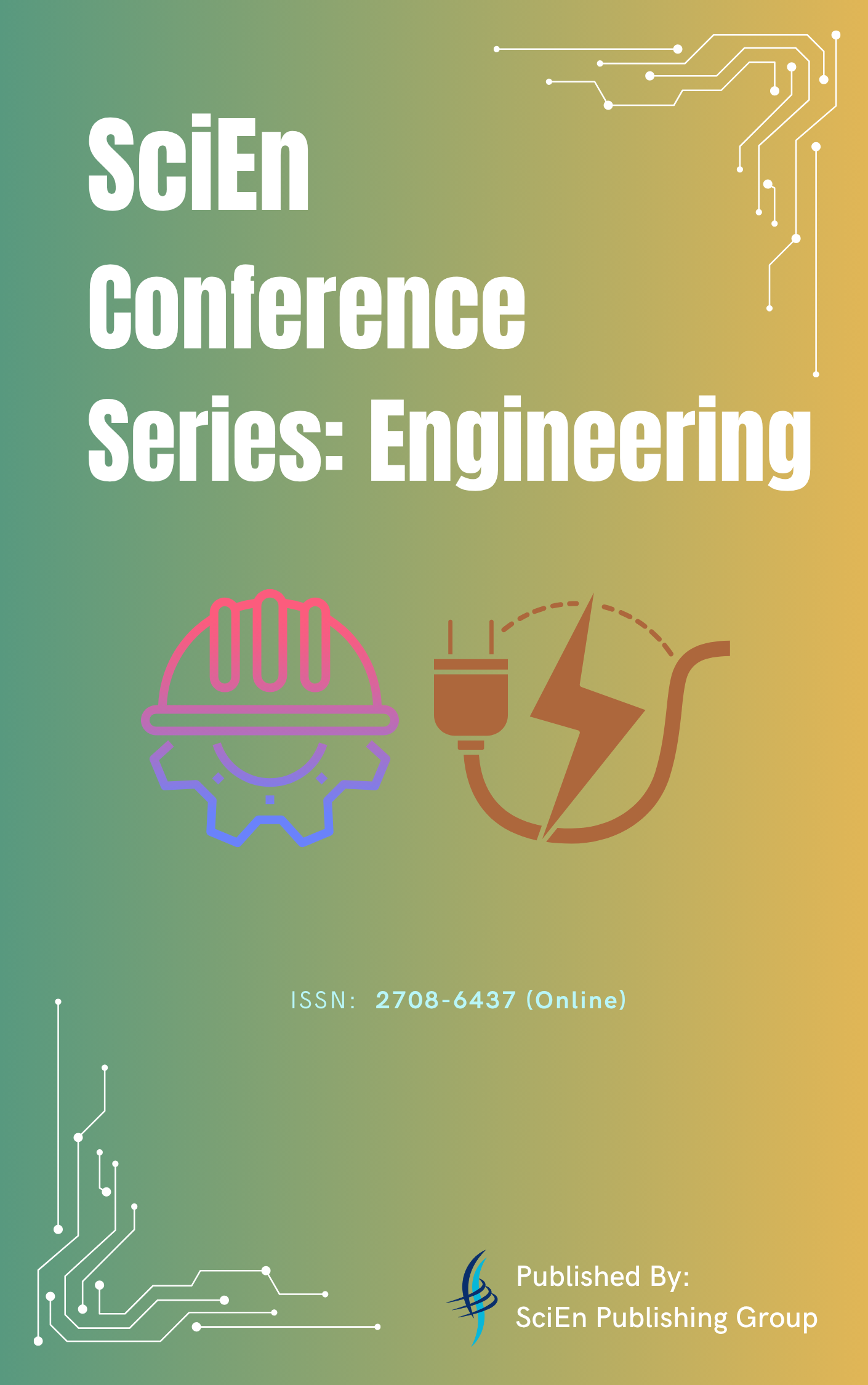Effects of Gasoline-Diesel Ratio on Combustion and Emission Characteristics of a Dual-Fuel CI Engine: A CFD Simulation
DOI:
https://doi.org/10.38032/jea.2021.03.004Keywords:
Dual-fuel Engine, Gasoline-Diesel Ratio, CFD, Rate of Heat Release (ROHR), Combustion DurationAbstract
Recently, considerable efforts are made by the engine researches all over the world, focusing primarily on achieving ultra-low emissions of NOx (nitrogen oxides) and soot without any compromise to high thermal efficiency from dual-fuel engine. In this study, combustion performance and engine-out emission of a single cylinder gasoline-diesel dual-fuel engine are numerically investigated by employing a commercial computation fluid dynamics (CFD) software, especially developed for internal combustion engines modeling. Here, gasoline-diesel relative ratio has been varied to find its impacts on performance of a dual-fuel engine. The results show that, in-cylinder pressure, in-cylinder temperature and rate of heat release (ROHR) are increased with gradual increment in diesel relative to gasoline. Injecting higher amount of diesel directly inside the combustion chamber as pilot fuel might have facilitated the auto-ignition process by reducing the ignition delay and accelerated the premixed gasoline-air flame propagation. These led to shorter main combustion duration which is quite desirable to suppress the knock in dual-fuel engines. In addition, NOx emission is found to decrease with relatively higher percentage of diesel. On the other hand, with increasing gasoline ratio relative to diesel, combustion duration is prolonged significantly and led to incomplete combustion, thereby increasing unburned hydrocarbon (UHC) and carbon monoxide (CO).
References
Kokjohn, S.L., Hanson, R.M., Splitter, D.A. and Reitz, R.D., 2010. Experiments and modeling of dual-fuel HCCI and PCCI combustion using in-cylinder fuel blending. SAE International Journal of Engines, 2(2), pp.24-39. DOI: https://doi.org/10.4271/2009-01-2647
Dempsey, A.B. and Reitz, R.D., 2011. Computational optimization of reactivity controlled compression ignition in a heavy-duty engine with ultra low compression ratio. SAE International Journal of Engines, 4(2), pp.2222-2239. DOI: https://doi.org/10.4271/2011-24-0015
Benajes, J., Molina, S., García, A., Belarte, E. and Vanvolsem, M., 2014. An investigation on RCCI combustion in a heavy duty diesel engine using in-cylinder blending of diesel and gasoline fuels. Applied Thermal Engineering, 63(1), pp.66-76. DOI: https://doi.org/10.1016/j.applthermaleng.2013.10.052
Park, S.H., Yoon, S.H. and Lee, C.S., 2014. Bioethanol and gasoline premixing effect on combustion and emission characteristics in biodiesel dual-fuel combustion engine. Applied energy, 135, pp.286-298. DOI: https://doi.org/10.1016/j.apenergy.2014.08.056
Jeftić, M. and Zheng, M., 2015. A study of the effect of post injection on combustion and emissions with premixing enhanced fueling strategies. Applied Energy, 157, pp.861-870. DOI: https://doi.org/10.1016/j.apenergy.2015.02.052
Fraioli, V., Mancaruso, E., Migliaccio, M. and Vaglieco, B.M., 2014. Ethanol effect as premixed fuel in dual-fuel CI engines: experimental and numerical investigations. Applied energy, 119, pp.394-404. DOI: https://doi.org/10.1016/j.apenergy.2014.01.008
Guerry, E.S., Raihan, M.S., Srinivasan, K.K., Krishnan, S.R. and Sohail, A., 2016. Injection timing effects on partially premixed diesel–methane dual fuel low temperature combustion. Applied energy, 162, pp.99-113. DOI: https://doi.org/10.1016/j.apenergy.2015.10.085
Yang, B., Xi, C., Wei, X., Zeng, K. and Lai, M.C., 2015. Parametric investigation of natural gas port injection and diesel pilot injection on the combustion and emissions of a turbocharged common rail dual-fuel engine at low load. Applied Energy, 143, pp.130-137. DOI: https://doi.org/10.1016/j.apenergy.2015.01.037
Dimitriou, P., Tsujimura, T., Kojima, H., Aoyagi, K., Kurimoto, N. and Nishijima, Y., 2021. Experimental and Simulation Analysis of Natural Gas-Diesel Combustion in Dual-Fuel Engines. Advances in Compression Ignition Natural Gas–Diesel Dual Fuel Engines. DOI: https://doi.org/10.3389/fmech.2020.543808
Pham, V.C., Choi, J.H., Rho, B.S., Kim, J.S., Park, K., Park, S.K., Le, V.V. and Lee, W.J., 2021. A Numerical Study on the Combustion Process and Emission Characteristics of a Natural Gas-Diesel Dual-Fuel Marine Engine at Full Load. Energies, 14(5), p.1342. DOI: https://doi.org/10.3390/en14051342
Mousavi, S.M., Saray, R.K., Poorghasemi, K. and Maghbouli, A., 2016. A numerical investigation on combustion and emission characteristics of a dual fuel engine at part load condition. Fuel, 166, pp.309-319. DOI: https://doi.org/10.1016/j.fuel.2015.10.052
Ma, J., Lü, X., Ji, L. and Huang, Z., 2008. An experimental study of HCCI-DI combustion and emissions in a diesel engine with dual fuel. International Journal of Thermal Sciences, 47(9), pp.1235-1242. DOI: https://doi.org/10.1016/j.ijthermalsci.2007.10.007
Micklow, G.J. and Gong, W., 2002. Mechanism of hydrocarbon reduction using multiple injection in a natural gas fuelled/micro-pilot diesel ignition engine. International Journal of Engine Research, 3(1), pp.13-21. DOI: https://doi.org/10.1243/1468087021545504
Mattarelli, E., Rinaldini, C.A. and Golovitchev, V.I., 2014. CFD-3D analysis of a light duty Dual Fuel (Diesel/Natural Gas) combustion engine. Energy Procedia, 45, pp.929-937. DOI: https://doi.org/10.1016/j.egypro.2014.01.098
López, J.J., Novella, R., García, A. and Winklinger, J.F., 2013. Investigation of the ignition and combustion processes of a dual-fuel spray under diesel-like conditions using computational fluid dynamics (CFD) modeling. Mathematical and Computer Modelling, 57(7-8), pp.1897-1906. DOI: https://doi.org/10.1016/j.mcm.2011.12.030
Cha, J., Kwon, S. and Park, S., 2011. An experimental and modelling study of the combustion and emission characteristics for gasoline–diesel dual-fuel engines. Proceedings of the Institution of Mechanical Engineers, Part D: Journal of Automobile Engineering, 225(6), pp.801-812. DOI: https://doi.org/10.1177/0954407011399825
Puduppakkam, K.V., Liang, L., Naik, C.V., Meeks, E., Kokjohn, S.L. and Reitz, R.D., 2011. Use of detailed kinetics and advanced chemistry-solution techniques in CFD to investigate dual-fuel engine concepts. SAE International Journal of Engines, 4(1), pp.1127-1149. DOI: https://doi.org/10.4271/2011-01-0895
https://combustion.llnl.gov/archived-mechanisms/surrogates/prf-isooctane-n-heptane-mixture [Accessed on 06-Mar-2020].
Peters, N., Turbulent Combustion. Cambridge University Press: Cambridge, UK, 2000.
Tan, Z., Reitz, R.D., 2006. An Ignition and Combustion Model for Spark Ignition Engine Multi-Dimensional Modeling. Combustion and Flame, 145, pp. 1-15. DOI: https://doi.org/10.1016/j.combustflame.2005.12.007
Heywood, J.B., Internal Combustion Engine Fundamentals. McGraw-Hill Publications: New York, USA, 1988.
Downloads
Published
Issue
Section
License
Copyright (c) 2021 Kazi Mostafijur Rahman, Md. Habibur Rahaman

This work is licensed under a Creative Commons Attribution-NonCommercial 4.0 International License.

